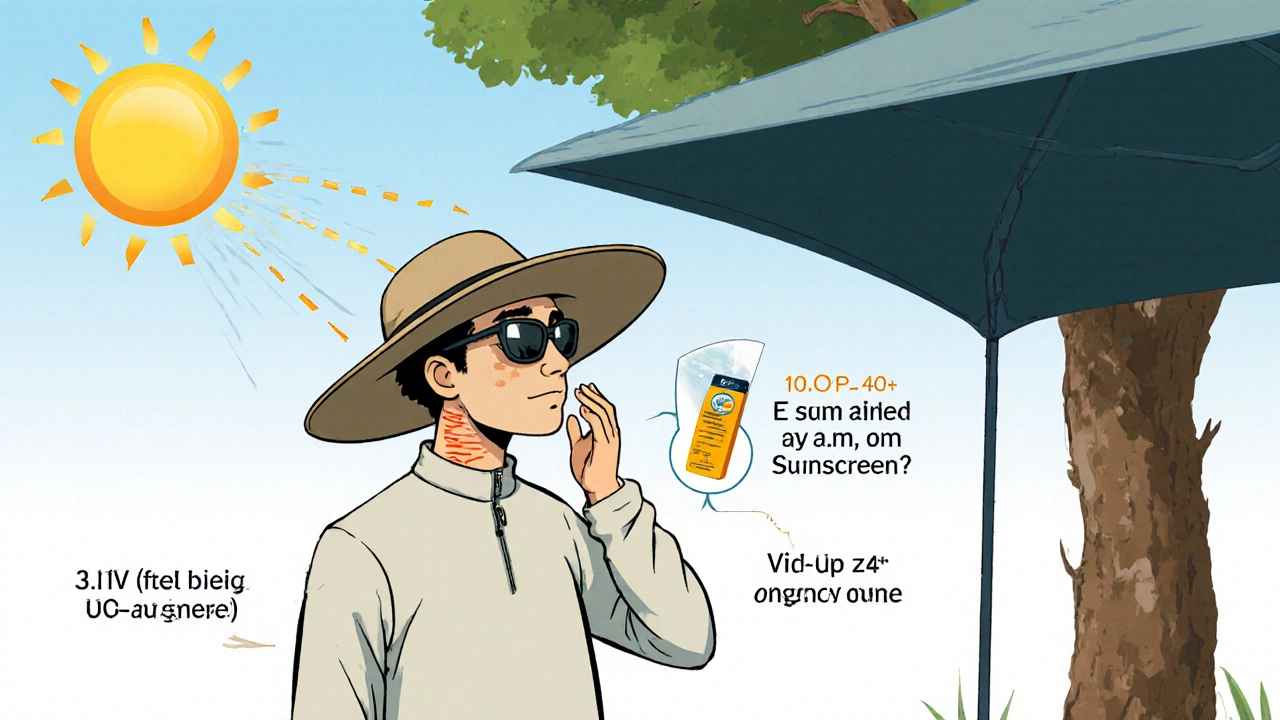When it comes to sun protection, the practice of shielding your skin from harmful ultraviolet radiation to prevent damage and reduce cancer risk. Also known as UV protection, it’s not just about avoiding a bad burn—it’s about stopping long-term harm before it starts. Every minute you spend in the sun without protection adds up. Even on cloudy days, up to 80% of UV rays still reach your skin. And it’s not just fair-skinned people at risk—everyone, no matter their skin tone, needs to take sun protection seriously.
UV radiation, the invisible part of sunlight that causes skin aging and DNA damage, comes in two main types: UVA and UVB. UVA penetrates deep into the skin, contributing to wrinkles and long-term damage. UVB is what gives you sunburn and directly links to skin cancer. Sunscreen, a topical product designed to absorb or reflect UV rays is the most common tool, but not all sunscreens are equal. Look for broad-spectrum coverage with SPF 30 or higher. Reapplying every two hours—or after swimming or sweating—isn’t optional. And no, SPF 100 doesn’t mean you can stay out all day. No sunscreen blocks 100% of UV rays.
There’s more to sun protection than lotion. Skin cancer prevention, a set of behaviors and habits aimed at reducing the risk of developing skin cancer includes wearing wide-brimmed hats, UV-blocking sunglasses, and seeking shade between 10 a.m. and 4 p.m. Clothing matters too—dark, tightly woven fabrics offer better protection than thin white T-shirts. Even your car windows don’t fully block UVA rays. If you drive a lot, consider UV-protective window film.
People often think tanning is safe if they don’t burn. That’s a myth. A tan is your skin’s response to DNA damage. There’s no such thing as a healthy tan from the sun. Tanning beds? Even worse. They emit UVA levels up to 12 times stronger than the midday sun. The World Health Organization classifies them as carcinogenic. And while vitamin D is important, you don’t need hours in the sun to get enough. A few minutes a few times a week, plus diet or supplements, is safer than risking skin damage.
Sun protection isn’t just for beach days or summer. Snow, sand, and water reflect UV rays, making exposure worse. Kids are especially vulnerable—their skin is thinner, and childhood sunburns double the risk of melanoma later. Make sun protection part of your daily routine, not just a summer habit. Check your skin monthly. Know your moles. If something changes, grows, or bleeds, see a doctor. Early detection saves lives.
The posts below cover real-world issues tied to sun protection: how chemicals in sunscreen interact with your body, what happens when you mix it with other meds, how to avoid eye damage from UV exposure, and why some people still get burned despite using protection. You’ll find practical advice on avoiding dangerous combinations, recognizing early signs of damage, and making smarter choices every day. No fluff. Just what you need to stay safe under the sun.

Learn how to prevent painful photosensitivity reactions with proven sun protection strategies, including SPF 50+ sunscreen, UPF clothing, window film, and avoiding common triggers like medications and skincare products.